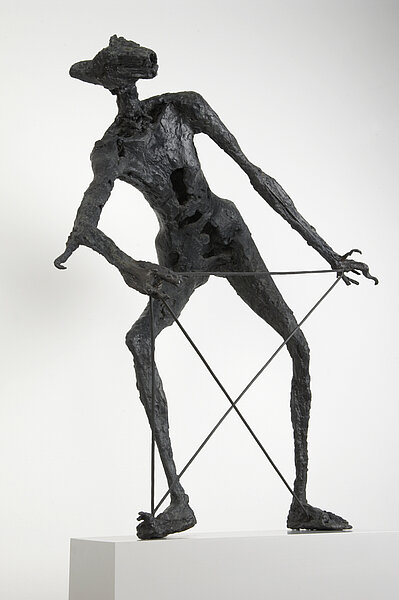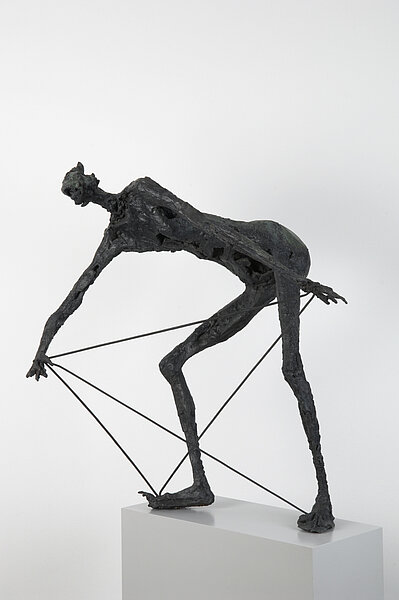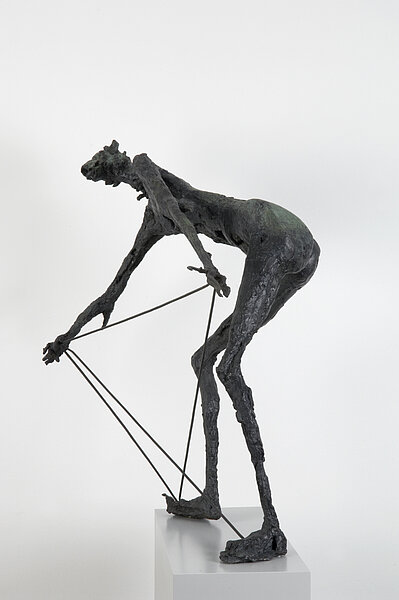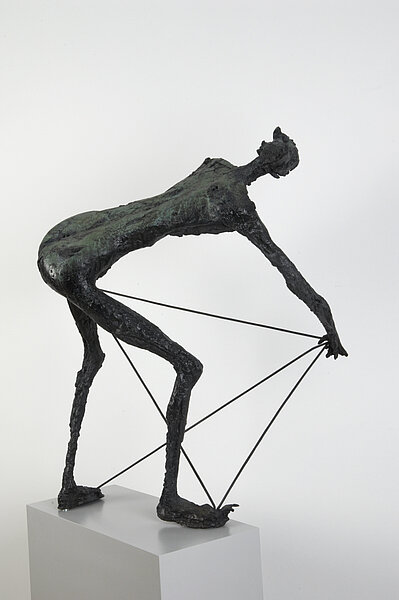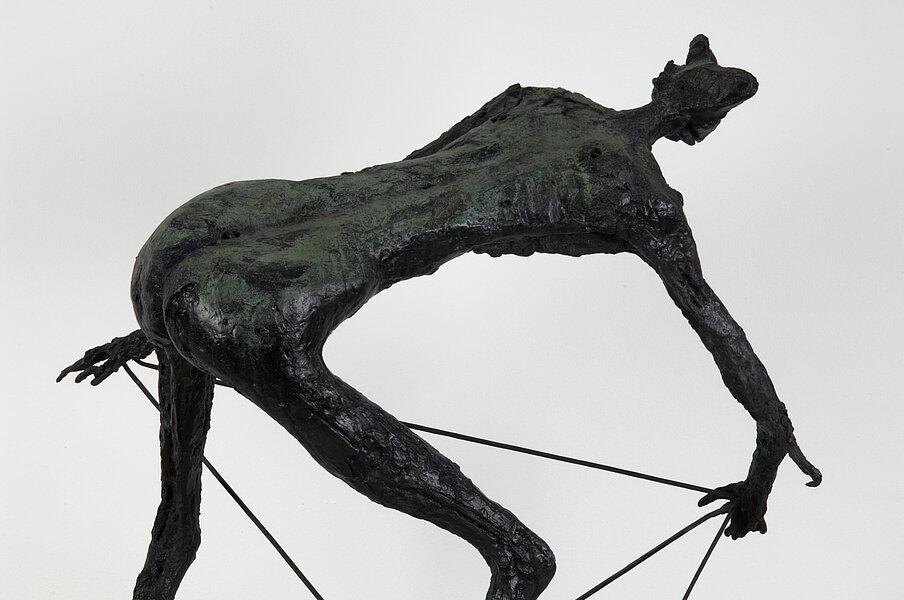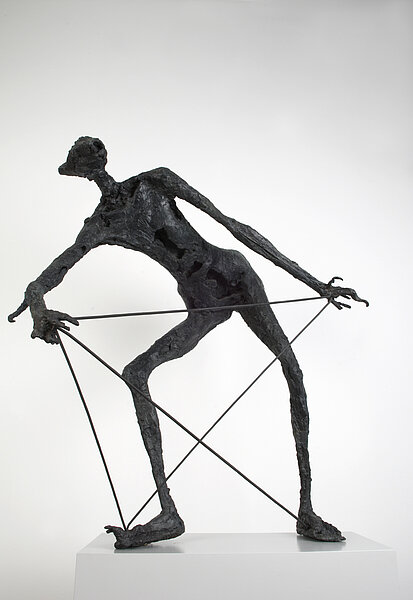
Richier, Germaine
Le Griffu
1952
| Object description | Bronze casting |
|---|---|
| Object category | plastic |
| Material |
Support:
bronze
|
| Technique |
Object:
bronze casting
|
| Dimensions |
object size:
height: 101 cm,
width: 93 cm,
depth: 75 cm
Sockel:
height: 80 cm,
width: 70 cm,
depth: 30 cm
|
| Year of acquisition | 1962 |
| Inventory number | P 8/0 |
| Creditline | mumok - Museum moderner Kunst Stiftung Ludwig Wien |
| Rights reference | Bildrecht, Wien |
| Further information about the person | Richier, Germaine [GND] |
| Literature |
Adolf Frohner Plastik Paris 1945-1965. Metropole der Kunst. Jahrzehnte des Aufbruchs. Malerei-Plastik-Grafik-Fotografie |
The entire oeuvre of the French sculptor Germaine Richier is oriented on humans and the possibility of including them in her work in an appropriate way. ‘Only what is human counts’, Germaine Richier once said in talking about her work. ‘Le Griffu’ [The Clawed One] is a hybrid entity which is both animal and human. Sometimes it inspires fear because of its appearance –– a rough, raw body surface, cavities and fingers which are bent into claws. At its elbow there is a protruding claw similar to that exhibited by bats. Hands and feet are linked with rods or wires and, depending on how one interprets them, seem to give the figure stability or define and limit it. ‘Le Griffu’ was made in the mid-twentieth century, just a few years after experiencing two world wars. With this as a backdrop, it is possible to project questions concerning human existence onto the sculptor’s works: In Paris Richier moved in the existentialist circles that took questions of individual human existence as their theoretical starting point. Richier’s works are made in this atmosphere of scepticism and the pessimistic climate of the existentialist philosophy of the post-war years. ‘Le Griffu’ graphically presents the bearing and physical tension of the distress and bondage of human existence. The human reason and animalistic, instinctive behaviour of this hybrid creature are equally tamed and imprisoned within the framework of lines. Richier’s surreal sculptures –– often compared to the works of Alberto Giacometti –– were made in a period when post-war society was searching for general social and political renewal, in a process of change and re-orientation. Thereby, her ‘Metamorphoses’, as the artist called them, are among the pioneering sculptures of the 20th century.
© mumok – museum moderner kunst stiftung ludwig wien

